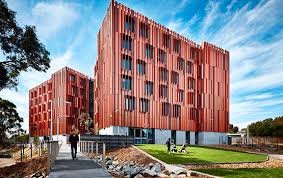Monash University partners with Victorian Government to skill-up Asia Pacific‘s future mRNA medicines manufacturing workforce
The Victorian Government and Monash University have partnered to establish Australia’s first dedicated mRNA medicines manufacturing workforce training centre through a landmark agreement supported by a $10 million grant and further investment from Monash University.
The Victorian Premier, the Hon Daniel Andrews and Minister for Industry and Innovation, the Hon Ben Carroll, visited the site of the future Centre and met with Monash University biomedical students.
Located on Monash’s Clayton Campus, The Monash Centre for Advanced mRNA Medicines Manufacturing and Workforce Training will develop the skills and capabilities of the future specialist workforce required for Victoria and Australia’s mRNA vaccine and therapeutic manufacturing ecosystem, as well as training people from across the Asia-Pacific region.
The Centre will draw on Monash’s exceptional pool of biotechnology talent and knowledge to deliver best-practice education and training programs across the mRNA medicines and pharmaceutical pipeline.
It will provide the education and training to support the specialist workforce needed for the new mRNA vaccine manufacturing facility now being built on Monash’s Clayton campus by global biotech Moderna.
The first set of programs will cater to both recent graduates and those from pharmaceutical companies or allied manufacturing industries looking to upskill and contribute to the dynamic and rapidly expanding mRNA medicines manufacturing ecosystem.
Courses will be developed in consultation with industry stakeholders, government and regulatory bodies, and will focus on the science underpinning the development of mRNA-based vaccines and medicines, as well as the regulatory processes governing the local manufacturing environment.
Importantly, courses will be designed to support growth of the mRNA vaccines and medicines industry across the entire production system, including bioprocess engineering, manufacturing, packaging and transport processes.
“The new Moderna facility and the Monash Centre for Advanced mRNA Medicines Manufacturing and Workforce Training bring together all the elements of an mRNA innovation ecosystem that will deliver long-term health, employment and economic benefits for the wider community,” said Professor Sharon Pickering, Deputy Vice-Chancellor (Education) and Senior Vice-President.
Monash University is home to Monash RNA, Australia’s largest network of RNA and mRNA researchers and brings together mRNA specialists from the fields of biotechnology, infectious disease, immunity and cancer, at the leading edge of a new era in novel mRNA therapeutics.
“The Victorian Government and Monash University have led the charge in the mRNA medicines space and we are now poised to establish a complete local mRNA research, development and manufacturing industry,” said Professor Doron Ben-Meir, Deputy Vice-Chancellor (Enterprise and Engagement) and Senior Vice President.
“This investment in our new Centre will deliver the specialist workforce needed to support the burgeoning mRNA medicines manufacturing industry, to deliver therapeutic innovation and production across the Asia-Pacific region and strengthen Australia’s sovereign capabilities,” said Centre Director Associate Professor Jennifer Short.
The Centre is strategically located at the heart of the Monash Technology Precinct – an innovation ecosystem of world-leading research facilities, companies and start-ups located in and around the Clayton campus, and Victoria’s largest employment hub outside the Melbourne CBD.
The use of mRNA technology is mostly widely known in the successful development of vaccines – including Australia’s first locally-produced COVID-19 mRNA vaccine candidate developed at the Monash Institute of Pharmaceutical Sciences and currently undergoing clinical trials. However mRNA technology also has potential application across a range of diseases and conditions, including HIV, muscular dystrophy, Alzheimer’s disease and cancer.

